Groundcovers are a big help in a growing space, not only visually but also for preventing soil erosion and suppressing weeds. There are somewhat limited options for groundcovers adapted to shade, and many people think of English Ivy for these circumstances. Though English Ivy does a superb job at suppressing weeds, it is an aggressive plant that also takes over the garden, damages trees, and can climb buildings and knock over walls from its sheer weight. Though it is of course natural and desirable for groundcovers to spread, some are more aggressive than others, so choose wisely! In some cases, you might sometimes want a more aggressive one to cover up the bare soil and deal with weed pressure. There are options for shade-tolerant groundcovers that can coexist with other plants with some management and even add beauty and ecological value. In this blog, we will be covering beneficial and/or edible, shade-loving groundcovers that can fit nicely into an orchard space and food forest.
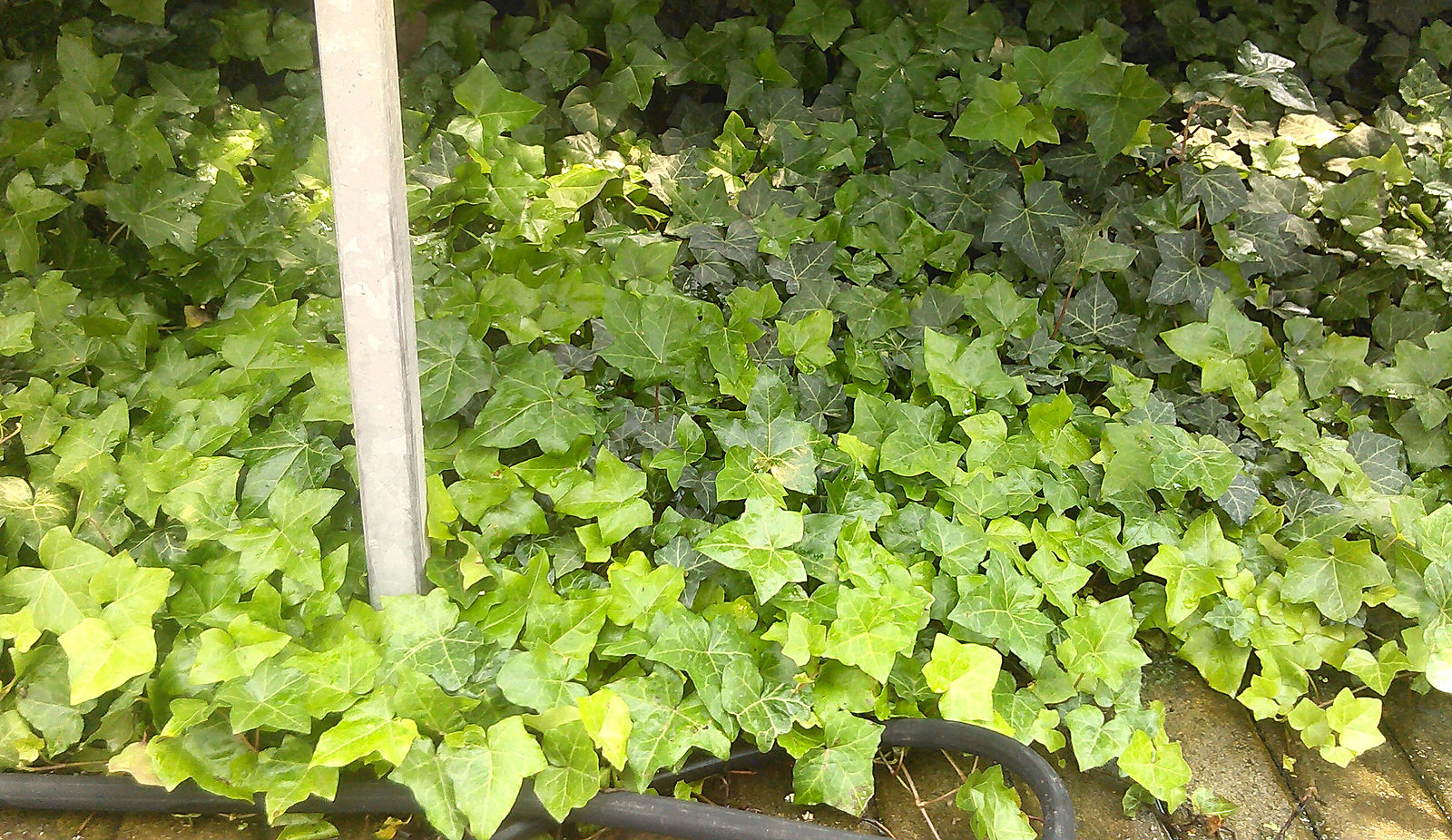
Source: Wikimedia Commons
One of the biggest challenges in growing spaces is keeping ahead of weeds or ‘volunteer’ plants. This challenge is enhanced with bare soil, so covering the soil is key for suppressing unwanted plants. Some growers use mulch, others use groundcovers. Ideally both would be used! What groundcovers do is cover up all exposed soil, making it hard for weeds to even germinate due to lack of open soil and light. If they do end up germinating, they might have trouble competing with the established root systems of a groundcover that likely grows faster and more densely. Planting a groundcover can reduce weeding tasks, though it can make it harder to establish certain desirable plants. It’s important to keep away the groundcover from the base of certain plants so that they aren’t zapped of their nutrients and water needs, especially when younger. Some plants are more tolerant of groundcovers growing up to their base, but make sure to research the plant and whether it needs more space from other plants or whether it is fine living in such close proximity to a groundcover. If the plant needs more space, a new task that will now be added to the growing space is cutting back the groundcover from around the base of plants and stopping its growth past the edge of the growing space, if it begins to grow past the boundary. It’s also important to not allow vining groundcovers to grow up trees, although the native groundcovers recommended in this blog don’t have that tendency.
Groundcovers also help prevent erosion from occurring on the site and can be used to slow runoff and stabilize the soil. This is not only very useful in areas with steep slopes, but also for gradual slopes as well. The leaves of the plants absorb some of the rainfall while the roots also absorb the water and hold the soil in place. The absorption of water through the leaves and roots reduces soil compaction so allows more water to infiltrate into the ground, rather than runoff the surface.
There are some major ecological benefits that come with groundcovers. Often, they provide food or habitat for animals and insects; additionally, they create better conditions for soil organisms to thrive. The leaves serve as a carbon sink and also provide important nutrients for plants, like nitrogen and potassium. They also protect the soil from sun and wind damage, allowing for healthier soil which in turn allows for healthier plants.
Before we get into POP’s recommended groundcovers, there are certain groundcovers that we discourage people from planting. This is due to their aggressive and non-beneficial nature. These groundcovers include English Ivy, Bishop’s Goutweed, Japanese Pachysandra, Periwinkle/Vinca, Chameleon Plant, Creeping Buttercup, as well as as vines like Trumpet Vine, Japanese Honeysuckle, and Porcelain Berry.
Below are some recommended beneficial, shade-loving groundcovers in this region and climate, frequently planted in POP orchards and food forests:
GOLDEN STAR
This is a native perennial groundcover that tolerates foot traffic and forms a dense mat with its clump-forming habit. Golden Star (Chrysogonum virginianum), also known as Green-and-Gold, is named after the abundance of golden, daisy-like flowers. It blooms most heavily in the spring and then more sporadically into the fall. The flowers provide nectar to pollinators but are unpalatable to herbivores, like deer. The leaves are hairy with blunt teeth and grow on a long stalk. It is semi-evergreen and will typically lose its leaves in the winter unless it is a mild season. It has a medium-growth rate and spreads via rhizomes. It will do a fair job suppressing any weed pressure, but if its growth is too vigorous for your taste, it can always be trimmed or divided. It is not prone to any pest or disease issue, except for the occasional snail or slug. It can tolerate partial shade; in fact, a sunny location can do it harm by scorching its leaves. It thrives in moist, well-drained soil, but can tolerate most soils. In the wild, this species is found growing in mesic to dry woodlands and open rocky woodlands and is more likely to be found in forest edges and clearings with bright filtered light rather than in densely shaded interiors. This is an ideal plant for a woodland garden or food forest setting.
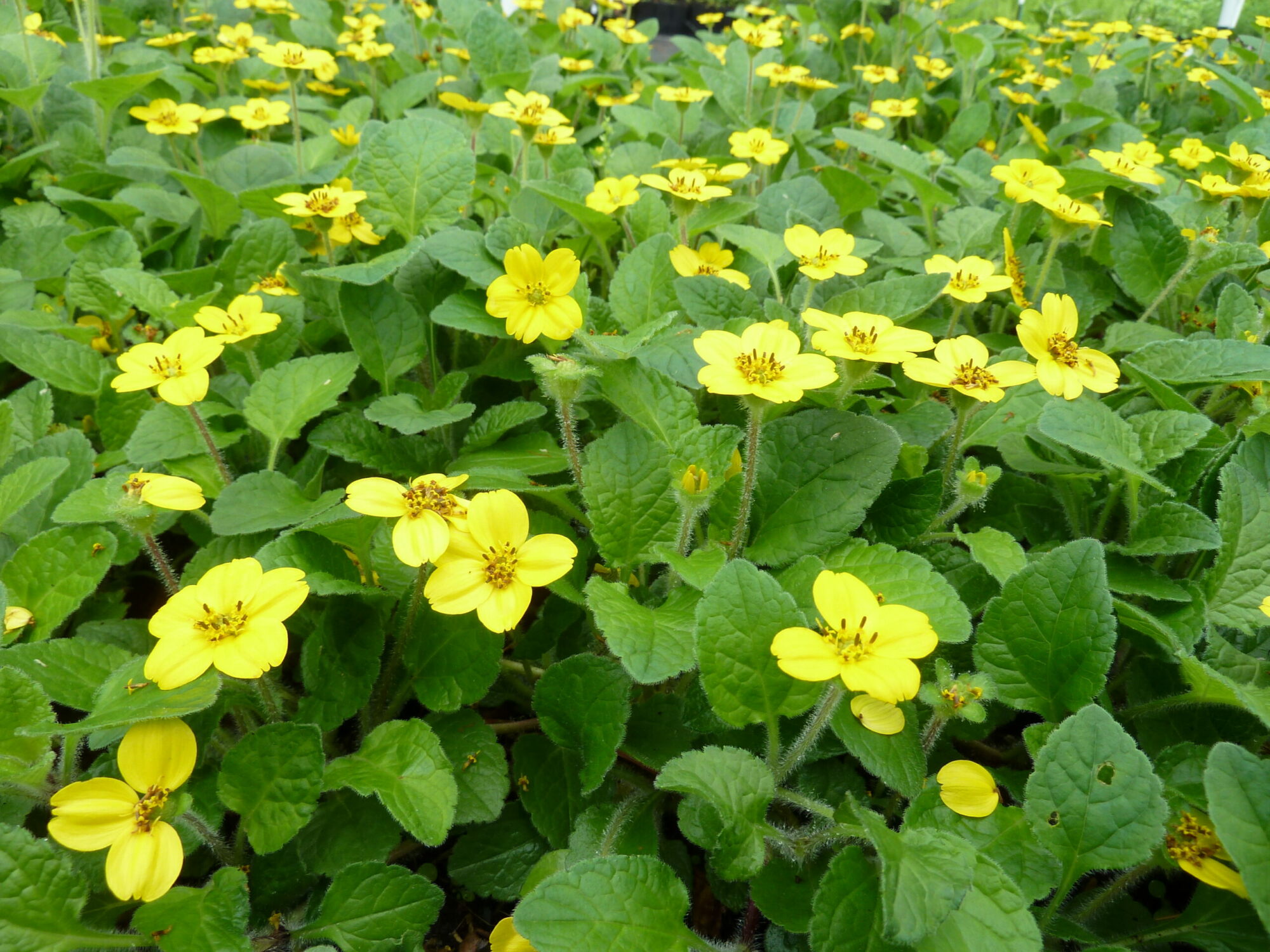
Source: Sylvan Gardens Landscape Contractors
BARREN STRAWBERRY
Barren Strawberry (Geum or Waldsteinia fragarioides) is a native, strawberry-like groundcover ideal for a shady garden. It is a great living mulch that forms dense mats and can grow between trees and on the edges of beds. Though related to the Garden Strawberry, it does not produce edible fruit. This plant is a short and sprawling groundcover with evergreen, basal leaves and yellow flowers on a leafless stalk that bloom in late spring to early summer. Its strength is that it, not only can tolerate shade, but it can even handle dry shade, a rather tough environmental condition not tolerated by most plants. It also does fine in moist conditions too. It prefers humus-heavy and slightly acidic soils. It responds well to dividing but can also be grown from cuttings and/ or seed. It doesn’t have and pest or diseases issues, aside from the occasional slug.
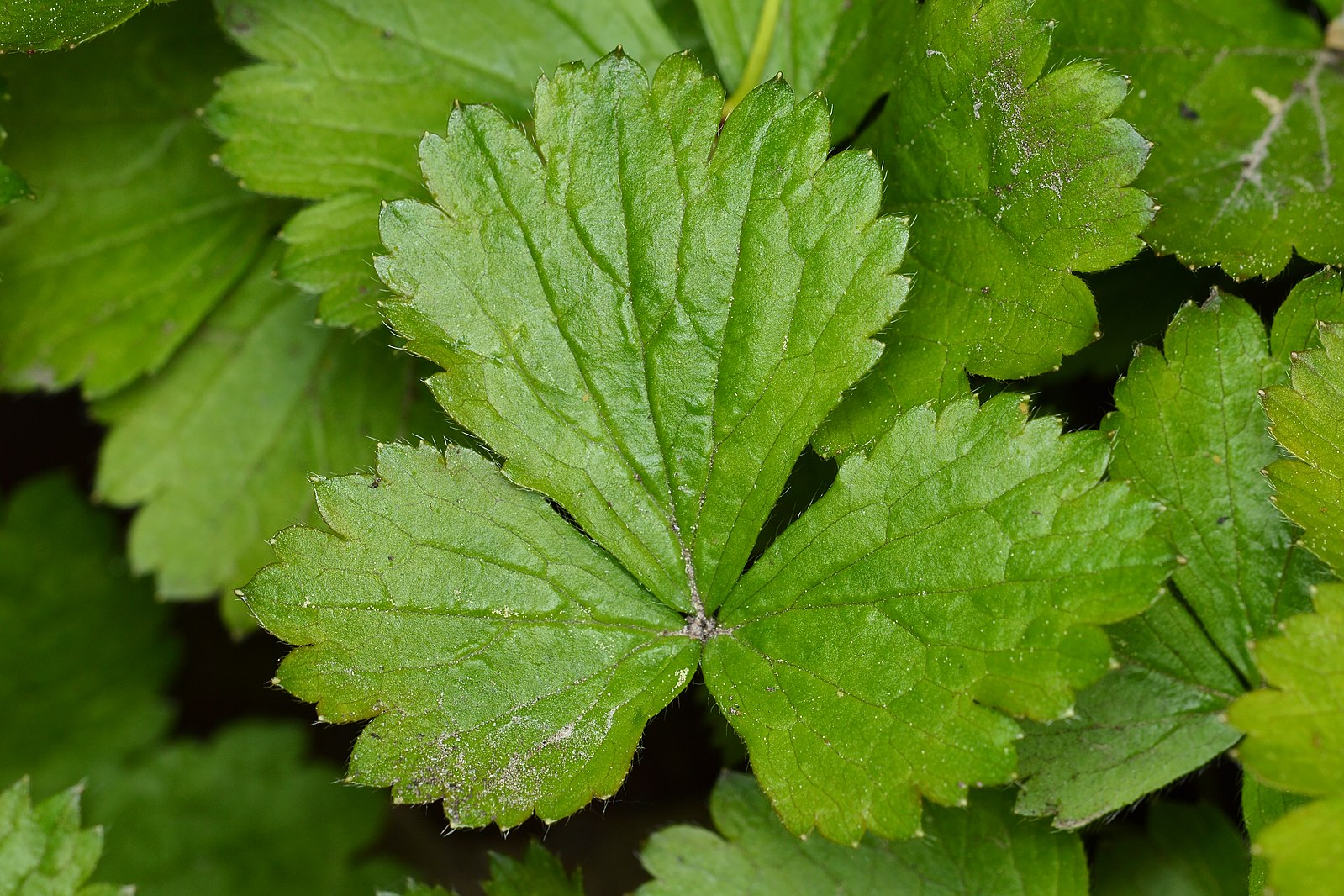
Source: Wikimedia Commons
DWARF GOLDENROD
You’re probably finding it hard to believe that a goldenrod can be used as a groundcover. Behold the Dwarf Goldenrod (Solidago sphaceleta), most commonly sold as the ‘Golden Fleece’ cultivar, a short and compact goldenrod that can be treated like a groundcover. It can get 15 inches tall and 2 feet wide, with a spreading habit. It has a stunning display of arching golden-yellow flower spikes in early fall. It’s blooms attract bees and butterflies in a season when not a lot of other things are blooming, making this plant a great addition for a pollinator garden. It has heart-shaped, semi evergreen leaves. When the flowers aren’t in bloom, the foliage acts like a short groundcover. It is drought tolerant plant and can tolerate most soil types. It prefers full sun, but is also happy in partial shade. It is native to North America and typically found growing wild in meadows and forest edges.
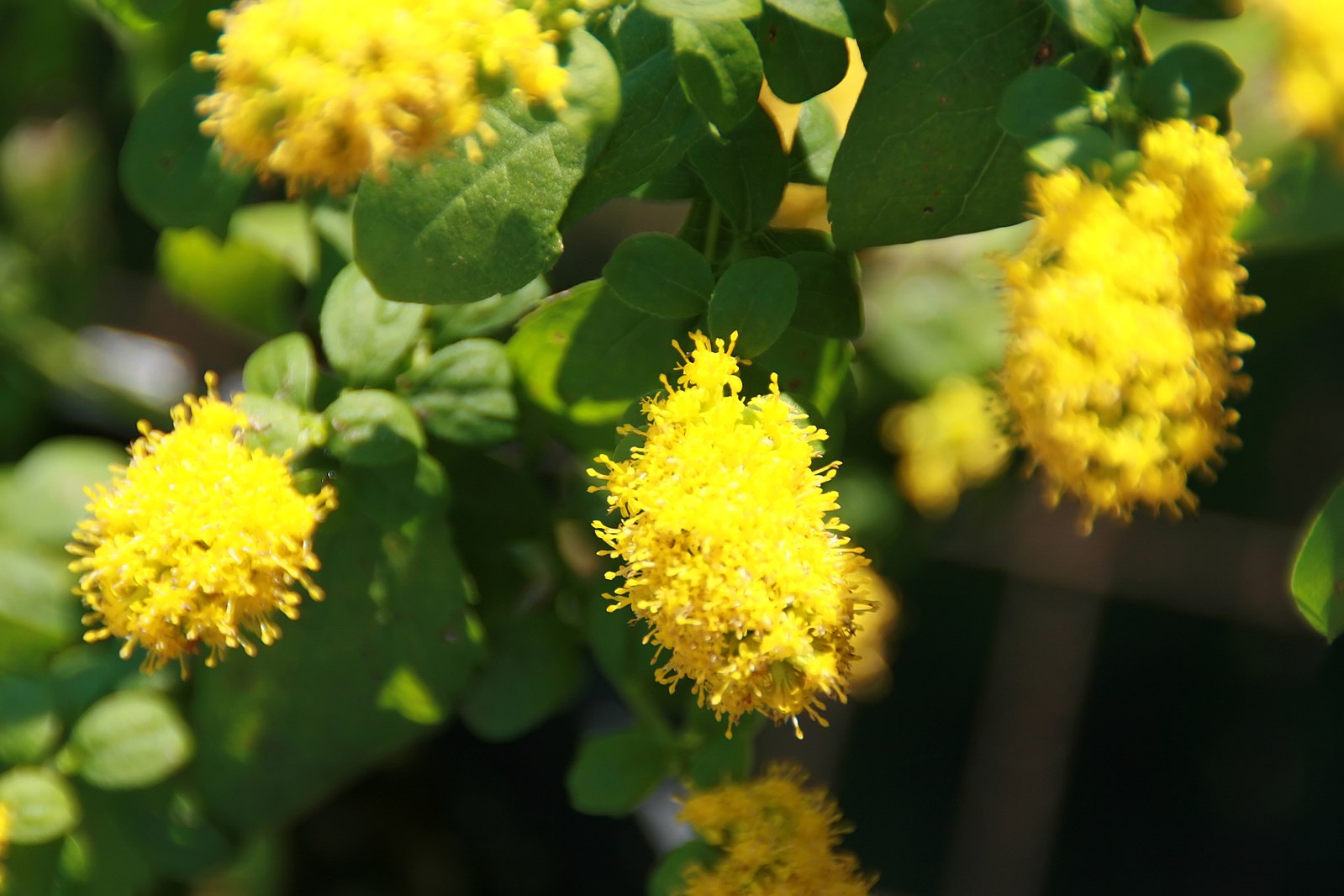
Source: Wikimedia Commons
WILD GINGER
Wild Ginger (Asarum canadense) is an aesthetically pleasing groundcover perfect for a shady garden. It is native to Eastern United States and is found growing in deciduous forests. It gets 6 – 8 inches tall with glossy green heart-shaped leaves and forms clumps. The clumps can be divided quite easily. The flowers, which bloom early summer, are often missed because they grow under the leaves, but they are a dark red color and shaped like bells. They are pollinated by non-flying insects, like ants, that crawl into the flowers rather than fly. Supposedly, the scent and dark red color also attracts carrion eating flies. It is not related to the edible ginger we are familiar with, but the root does taste a bit ginger-like, though it is supposedly mildly toxic and should be consumed in small quantities (see disclaimer below). Wild Ginger was commonly used as a poultice by many indigenous peoples in North America. Modern science claims that the root contains two antibiotic compounds, which confirms the knowledge of the Native Americans that wild ginger root can prevent infection and heal wounds. They grow well in full shade and tolerate partial shade; their leaves may develop sun scald if they get too much sun. They grow best in moist, rich soil that is slightly acidic. At Awbury Food Forest, one of POP’s sites, Wild Ginger was planted in the understory of some Paw Paw trees. This pairing has great synergy because Paw Paw flowers are also a maroon color and bloom around the same time as the Wild Ginger, possibly aiding in pollination of both species.
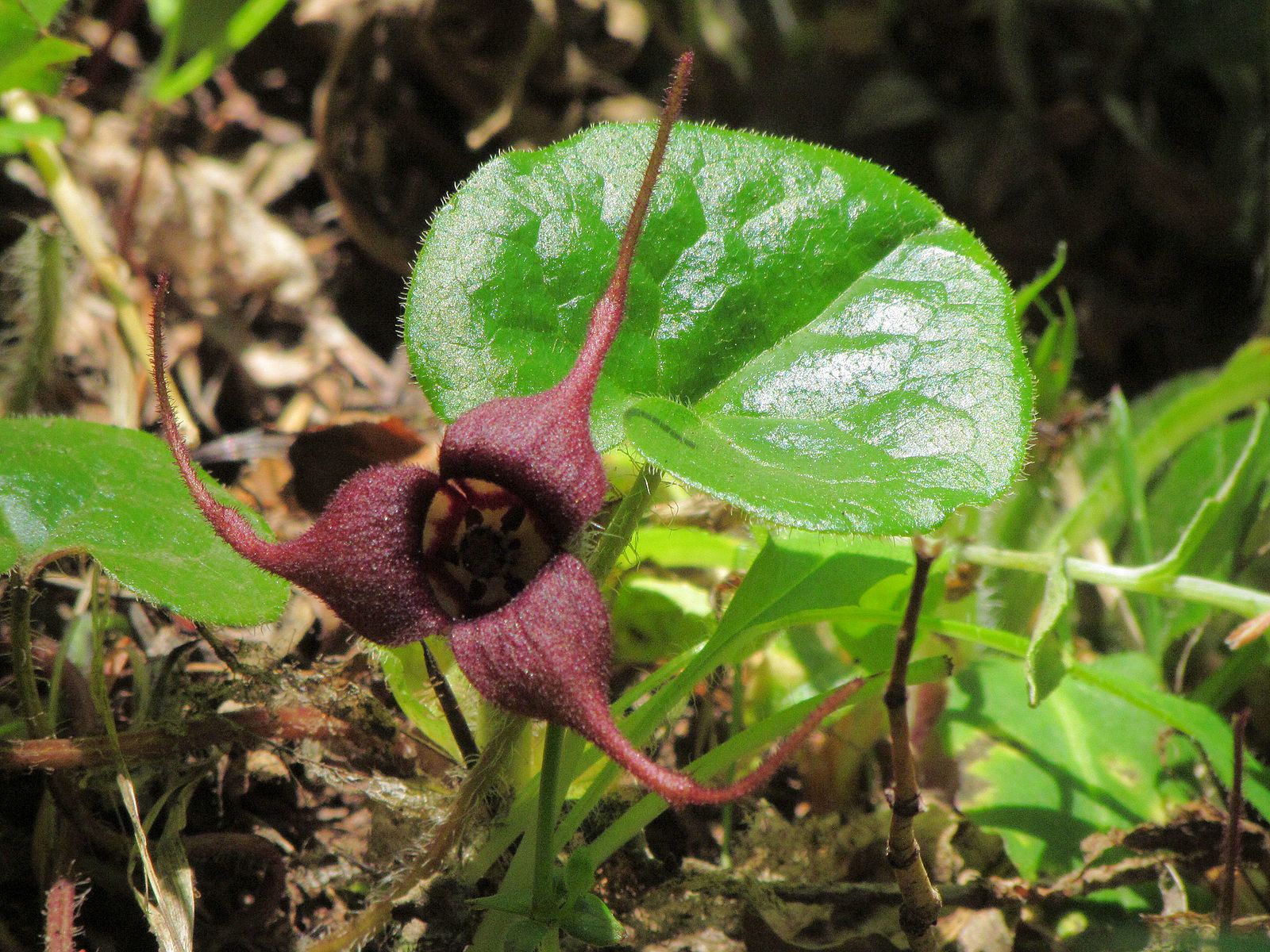
Source: Wikimedia Commons
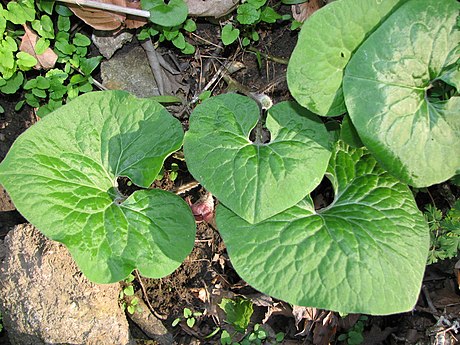
Source: Wikimedia Commons
REFERENCES
Food forest groundcovers: https://www.outdoorhappens.com/groundcover-herbaceous-layers-food-forest/
Alternatives to invasive groundcovers: https://www.finegardening.com/article/27-better-ground-covers-for-shade-to-replace-problematic-plants
Golden Star: http://www.perennials.com/plants/chrysogonum-virginianum.html
Barren Strawberry: https://www.wildflower.org/plants/result.php?id_plant=WAFR
Dwarf Goldenrod: https://www.gardenia.net/plant/solidago-sphacelata-golden-fleece-goldenrod
Wild Ginger: https://www.wildflower.org/plants/result.php?id_plant=asca
DISCLAIMER
The information presented on this website is for informational, reference, and educational purposes only and should not be interpreted as a substitute for diagnosis and treatment by a health care professional. Always consult a healthcare professional or medical doctor when suffering from any health ailment, disease, illness, or injury, or before attempting any traditional or folk remedies. Keep all plants away from children. As with any natural product, they can be toxic if misused.
The Philadelphia Orchard Project stresses that you should not consume parts of any wild edible plants, fungi, herbs, weeds, trees, or bushes until you have verified with your health professional that they are safe for you. As with any new foods that you wish to try, it is best to introduce them slowly into your diet in small amounts.
This POP Blog was written by Orchard Assistant Simone Shemshedini.
SUPPORT US! If you found this entry useful, informative, or inspiring, please consider a donation of any size to help POP in planting and supporting community orchards in Philadelphia: phillyorchards.org/donate